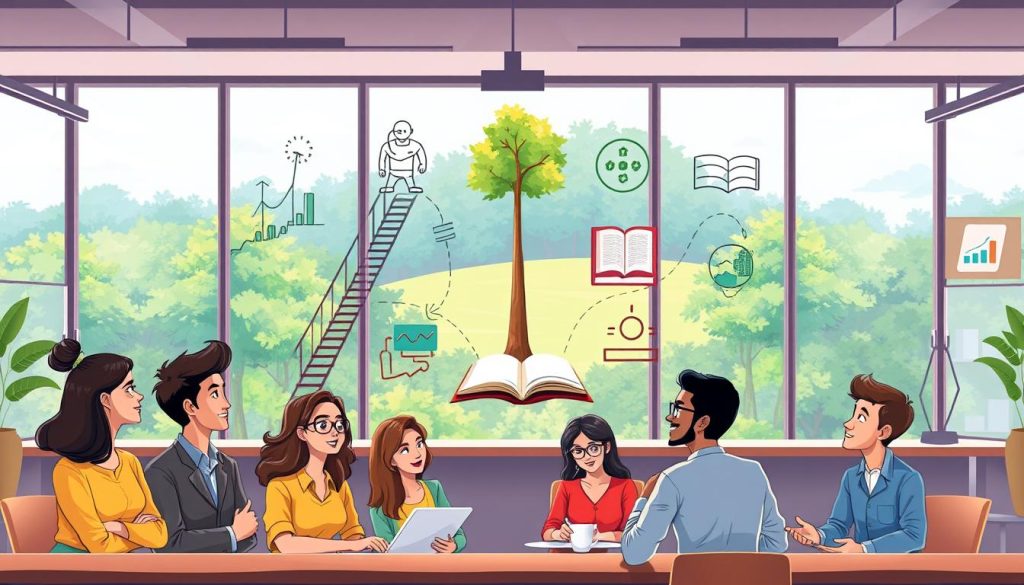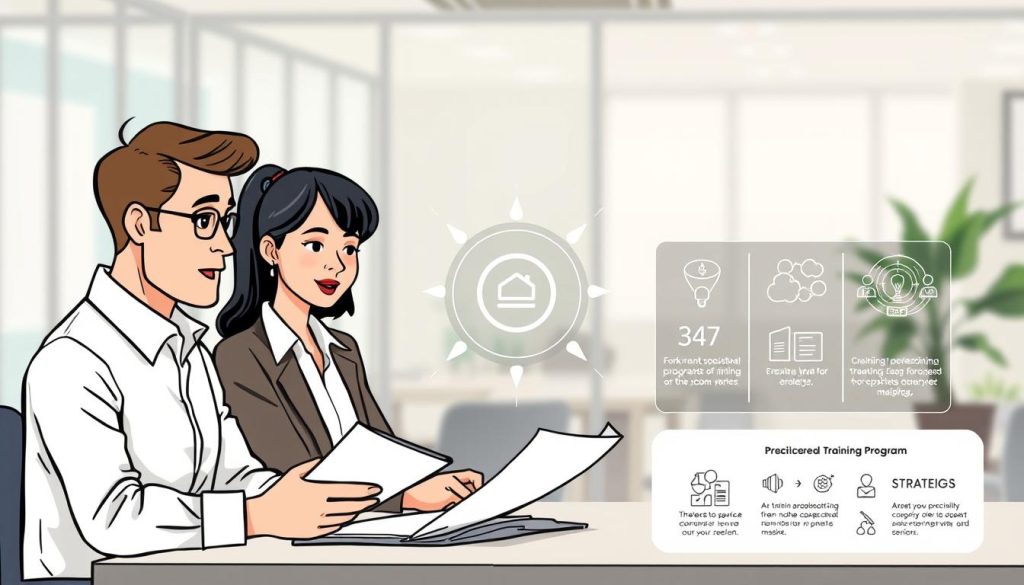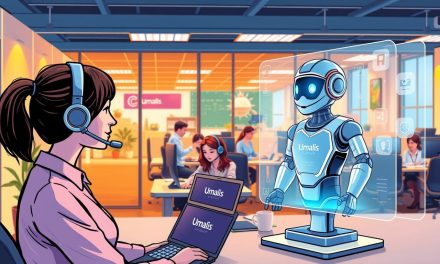Is your degree enough to keep you relevant in today’s job market? As technology reshapes industries and skills become outdated faster than ever, professionals face a stark reality: past credentials alone won’t guarantee career security.
The modern workplace demands adaptability. Rapid advancements in AI, automation, and global markets mean yesterday’s expertise might not solve tomorrow’s challenges. For independent professionals in France’s competitive landscape, ongoing skill development has shifted from optional to essential.
Unlike traditional professional development—often limited to occasional seminars—lifelong learning embraces diverse methods. Workshops, industry podcasts, and hands-on projects create a dynamic growth cycle. This approach helps you stay ahead of trends while building versatile expertise.
Why does this matter? Professionals who prioritize learning navigate career transitions with confidence. They spot opportunities others miss and maintain relevance even during economic shifts. It’s not just about keeping a job—it’s about shaping your future.
Table of Contents
Key Takeaways
- Lifelong learning transforms static careers into adaptable growth journeys
- Essential for stability in industries disrupted by technology
- Combines formal training, self-directed study, and real-world practice
- Maintains relevance as market demands evolve
- Serves as both career insurance and advancement strategy
Understanding the Essence of Continuous Learning
What separates professionals who thrive from those who merely survive in evolving industries? The answer lies in their approach to growth. Modern career success requires more than static expertise—it demands a strategic response to shifting workplace demands and global trends.
Defining Continuous Learning
This approach involves regularly updating skills and practical knowledge through multiple channels. Unlike one-time certifications, it combines formal courses, peer mentoring, and real-world problem-solving. For example:
- Healthcare workers mastering new safety protocols
- Retail managers adopting AI inventory tools
- Consultants refining client communication methods
It transforms professionals into adaptable problem-solvers who anticipate changes rather than react to them.
Lifelong Learning vs. Professional Development
While professional development often focuses on job-specific training, lifelong learning embraces broader personal growth. Think of it this way:
- Leadership workshops = career advancement tools
- Industry podcasts = market awareness builders
- Cross-department projects = innovation incubators
Both approaches work best when combined. Structured programs provide credentials, while self-driven exploration fosters creative thinking. Together, they create professionals who evolve with their industries rather than chase outdated standards.
The Business Case for Continuous Learning
How do industry leaders maintain their edge in fast-moving markets? Recent data reveals a clear pattern: organizations prioritizing skill development consistently outperform competitors. A 2023 study of 1,200 European firms shows businesses investing in ongoing training achieve 3.2x faster market response times and 42% higher customer satisfaction scores.
Enhancing Competitiveness and Innovation
Forward-thinking companies use learning programs as innovation engines. Consider these findings:
| Metric | Learning-Focused Firms | Industry Average |
|---|---|---|
| First-to-Market Success | 46% | 18% |
| New Product Adoption | 92% | 51% |
| Employee-Driven Improvements | 67% | 29% |
This advantage stems from empowered teams. When staff master emerging technologies and market trends, they spot opportunities faster. Retail chains using weekly micro-training sessions report 38% shorter product launch cycles.
Impact on Productivity and Retention
Skill development directly affects workforce stability. Employees receiving regular training are:
- 58% less likely to change jobs annually
- 41% more productive in cross-functional roles
- 3x as likely to recommend their employer
French tech firms like Algolia credit their 4.2% annual turnover rate—half the industry norm—to personalized learning paths. « Our growth depends on keeping talent engaged, » notes their L&D director. « Training isn’t an expense—it’s how we future-proof our team. »
Building a Culture of Growth and Engagement
How do companies future-proof their workforce? By transforming skill development from obligation to cultural cornerstone. Organizations that prioritize employee growth see 73% higher retention rates and 2.1x faster innovation cycles compared to peers, according to a 2024 French workforce study.
Leadership’s Role in Encouraging Development
Executives set the tone for organizational change. When managers allocate 5% of work hours to training and share their own development goals, teams are:
- 41% more likely to pursue certifications
- 3x as engaged in cross-department projects
- 68% faster adopting new tools
French telecom leader Orange credits its « Learn Together » program—where executives co-create courses with staff—for reducing skill gaps by 52% in 18 months.
Fostering a Collaborative Environment
Psychological safety drives knowledge sharing. Proven methods include:
- Monthly « failure debriefs » to normalize experimentation
- Peer mentoring systems matching junior/senior staff
- Cross-functional innovation challenges with real budgets
Align these efforts with business targets. For instance, linking training to career growth with stability increases program participation by 89%. When employees see how their development impacts company success, engagement becomes organic—not enforced.
Benefits of Continuous Learning for Employees and Companies

What separates stagnant teams from high-performing organizations? The answer lies in how they approach skill-building over time. Modern workforce strategies recognize that growth opportunities benefit both professionals and their employers through measurable improvements in output and engagement.
Elevating Workplace Excellence
Regular training programs create measurable advantages:
- Teams using updated industry best practices complete projects 28% faster
- 78% of workers report higher job satisfaction when given growth opportunities
- Companies with skill enhancement programs retain talent 2.3x longer
French retail leader Décathlon attributes its 19% productivity boost to quarterly micro-certifications. « Our staff solve problems faster because they’re confident in their abilities, » notes their HR director.
Strengthening Client Relationships
Well-trained employees directly impact customer loyalty. Consider these findings:
- 43% of consumers abandon brands after poor service interactions
- Teams receiving monthly training resolve complaints 37% faster
- Client retention improves by 51% when staff master new technologies
This adaptability proves crucial in France’s competitive markets. Companies that prioritize development report 68% faster response to shifting consumer preferences compared to industry peers.
The mutual benefits create a sustainable advantage. Employees gain career security through market-ready expertise, while organizations build agile teams ready for tomorrow’s challenges.
Optimizing Your Continuous Learning Process
Professionals seeking career longevity need more than occasional training—they require systems that grow with them. Modern tools transform scattered efforts into strategic growth engines, aligning skill development with real-world demands.
Leveraging Technology and Learning Management Systems
Centralized platforms like Learning Management Systems (LMS) streamline skill-building. These tools consolidate courses, track progress, and enable peer collaboration through integrated forums. French firms report 47% faster onboarding when using LMS dashboards to monitor team competencies.
Key features include:
- Automated skill gap analysis for targeted training
- Mobile access to micro-learning content
- Real-time feedback loops between mentors and learners
Customizing Learning Paths for Diverse Needs
Effective programs adapt to individual roles and aspirations. A sales director might focus on negotiation simulations, while a developer prioritizes AI coding workshops. Adaptive algorithms suggest content matching both current responsibilities and long-term career goals.
Best practices for personalization:
- Assess team members’ existing expertise quarterly
- Align courses with project requirements
- Offer flexible formats (videos, podcasts, interactive quizzes)
This tailored approach increases course completion rates by 63% in French tech sectors, according to recent L&D reports. When content directly supports daily tasks, professionals engage deeper and apply knowledge faster.
Practical Strategies for Implementing Continuous Learning

How do forward-thinking organizations translate growth plans into measurable results? The answer lies in structured frameworks that connect skill development to business outcomes. We outline a proven five-phase approach used by leading French firms to build adaptable workforces.
Assessing Training Needs and Setting Objectives
Begin by mapping your company’s strategic priorities against current capabilities. A 2023 survey revealed 63% of French businesses use skills gap analyses to identify critical training needs. Effective methods include:
- Department-wide competency assessments
- Client satisfaction trend analysis
- Technology adoption forecasts
Align these findings with specific employee training goals. For instance, a consulting firm might prioritize targeted training programs on AI tools to meet client demands.
Planning, Execution, and Feedback Integration
Transform insights into action through phased rollouts. Successful implementations combine:
- Quarterly learning roadmaps tied to company OKRs
- Blended formats (micro-courses + peer coaching)
- Real-time progress dashboards
French logistics leader Géodis achieved 89% program completion rates by integrating weekly feedback loops. « Our teams suggest course adjustments based on project realities, » notes their L&D head. This approach ensures training evolves with workforce requirements.
Measure impact through performance metrics and promotion rates. Companies tracking skill application see 47% faster ROI on development investments compared to those focusing solely on completion rates.
Real-World Success Stories and Case Studies
Leading organizations prove that strategic skill-building drives measurable results. Across industries, innovative programs demonstrate how tailored approaches create competitive advantages while boosting employee engagement.
Examples from the Technology and Business Sectors
Pixar Animation Studios redefined workplace education through Pixar University. Employees access 14 weekly sessions spanning technical animation classes to creative workshops in ballet and improvisation. This cross-disciplinary approach fuels the studio’s legendary innovation culture.
IBM adopted a digital-first strategy with its YouTube learning channel, delivering bite-sized tutorials and leadership insights. PayPal blended social collaboration with structured courses through private Facebook groups and Udemy’s 2,500+ class library.
Key Lessons from Leading Companies
Three principles emerge from successful programs:
- Blend formats: Mix peer-driven social learning with expert-led content
- Measure impact: A tech firm saw 25% productivity gains and doubled innovation output post-implementation
- Align with values: PayPal’s model increased employee satisfaction by 40% through career development opportunities
These cases reveal a universal truth: companies investing in adaptable learning development outpace competitors. As one L&D director notes, « Our program isn’t about checking boxes—it’s how we future-proof our people. »
Conclusion
In today’s fast-paced economy, adaptable skill development separates thriving professionals from those struggling to keep pace. Organizations embracing this mindset build workforces ready for unexpected challenges while unlocking new growth paths.
Strategic investment in employee development yields measurable returns. Teams gain problem-solving agility, companies secure market leadership, and industries evolve through shared knowledge. France’s competitive sectors demonstrate this daily—firms prioritizing regular training see 2.1x faster promotion rates and 38% higher client retention.
The true power lies in cultural transformation. When growth becomes embedded in daily operations, professionals naturally seek career-enhancing opportunities. Leaders who model this behavior inspire company-wide engagement, turning individual progress into collective advantage.
This approach reshapes traditional career paths. Rather than reacting to industry shifts, prepared professionals anticipate trends and shape their fields. For lasting success, view skill-building not as periodic training but as core to professional identity—the ultimate career safeguard in uncertain times.
FAQ
How does ongoing skill development benefit businesses?
Regular upskilling keeps teams aligned with industry trends, improves problem-solving capabilities, and drives innovation. Companies like Microsoft and Salesforce attribute 30%+ productivity gains to structured development programs.
What’s the difference between lifelong learning and professional training?
Lifelong learning focuses on personal growth across various domains, while professional development targets job-specific competencies. Both complement each other but serve distinct roles in career advancement.
Can learning initiatives improve employee retention?
Yes. LinkedIn’s Workplace Report shows organizations with strong development cultures experience 53% lower turnover. Employees value employers who invest in their career trajectories.
How do leaders effectively promote a growth mindset?
By modeling curiosity, allocating dedicated learning hours, and recognizing skill milestones. Adobe’s “Learning Fund” program, which offers annual stipends for courses, increased cross-department collaboration by 41%.
What tools optimize modern training programs?
Platforms like LinkedIn Learning and TalentLMS enable personalized content delivery, progress tracking, and microlearning modules. Cloud-based systems reduce onboarding time by 60% compared to traditional methods.
How can small teams implement cost-effective development?
Focus on peer-led workshops, curated industry webinars, and mentorship pairings. HubSpot’s certification programs demonstrate how scalable digital resources can elevate team capabilities without large budgets.
Why prioritize adaptability in learning strategies?
With 65% of jobs evolving due to AI (World Economic Forum), adaptable training ensures workforce readiness. Amazon’s Upskilling 2025 initiative successfully retrained 300,000 employees for tech-driven roles.





